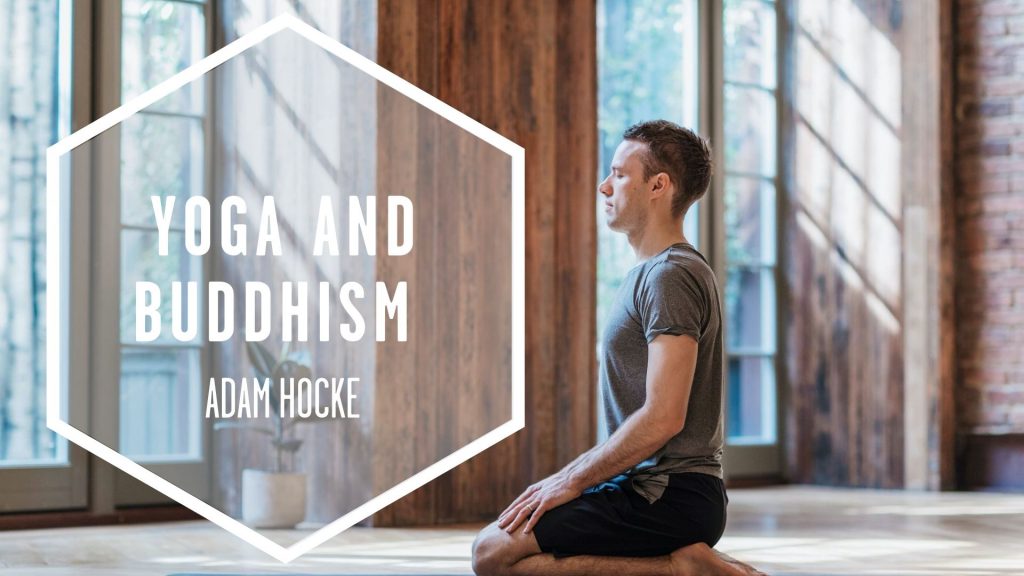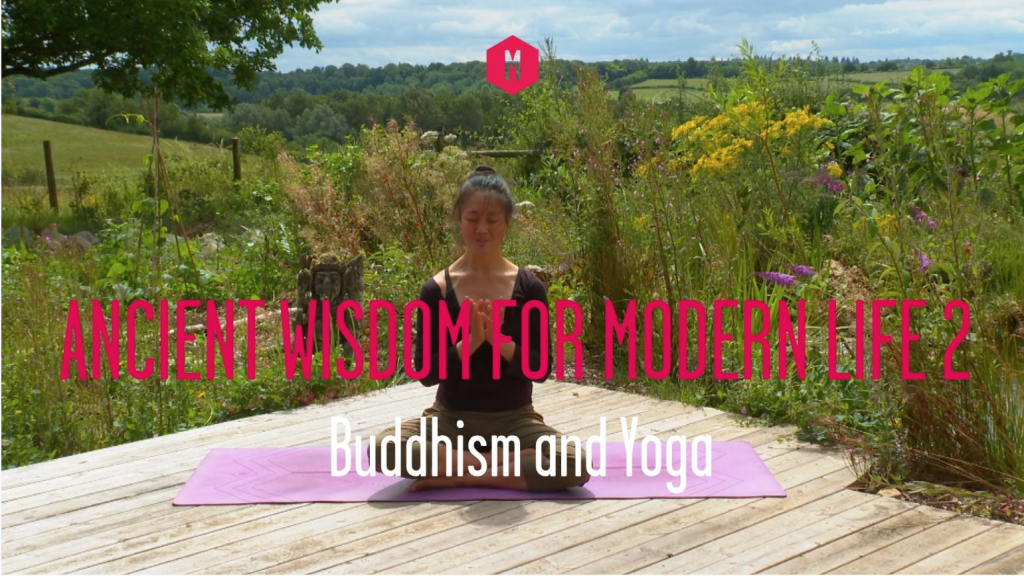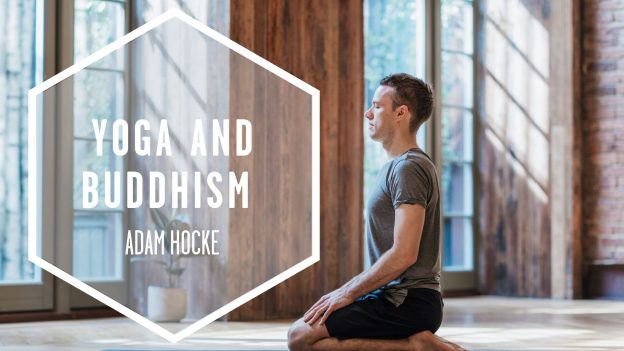
What is the relationship between Yoga and Buddhism? How can we weave the teachings of Buddhism into a physical yoga practice? Do the Buddhist teachings have any relevance to modern life? We have been talking about all these and more with Adam Hocke who has been working with Buddhist teachings over a number of years to develop greater compassion.
We have been talking to Adam Hocke about yoga and Buddhism, his classes that were inspired by Buddhist teachings and his concept of the ‘Brave Yogi’. For Adam, this represents those individuals who are those seeking to awaken their hearts and to reduce the suffering of others. Adam’s new classes explore the ‘Pāramitās’ of Mahayana Buddhism, which he has found particularly resonant in his personal practice. As a yoga teacher, he wanted to offer an embodied understanding – a taste of how some of these profound and enriching teachings can feel in the body as a taster of how this framework can support our individual growth. We started out by asking Adam about the relationship between yoga and Buddhism, what being a ‘Brave Yogi’ entails and how to navigate lists in Buddhism.
What is the relationship between yoga and Buddhism?
The relationship between yoga (mind/body practices) and Buddhism (a comprehensive philosophical and spiritual tradition) is long and complex. Historically, these traditions emerged together. In fact, there is much debate about whether the yoga practice of postures initially grew out of Hindu traditions or Buddhist traditions. You could get lost in trying to figure this out precisely, but what is in no doubt is that from the very beginning, Yoga, Buddhism, Hinduism, Jainism and other traditions that emerged in India have been inextricably linked. This rich and complex melting pot has produced the practices and teachings we know and love.
The starting point of most people for the philosophical teachings of yoga are the yoga sutras of Patañjali. Not to overemphasise a point, but even these foundational and non-Buddhist teachings owe an intellectual debt to the noble eightfold path taught by the Buddha, which predates them. However, what I want to emphasise and open up for curious students is there is a lot more out there than Patanjali to explore and it still is compatible with yoga! The teachings that resonate most deeply with me right now in my yoga practice are the Pāramitās from Mahayana Buddhism.
I’m guessing the Pāramitās are a list – but what exactly are they a list of?
There are many different ways of translating what ‘Pāramitā’ mean. If you break down the word literally, you’ll find that ‘para’ means the other shore and ‘mita’ means arrived – so it literally means the process of getting to the other side. So, this is a list of ways to move away from suffering, or to liberation. There are lots of ways the word has been translated, which adds all sorts of colours and textures to it: the ‘perfections’ is one; or ‘six qualities of an awakened heart’; or ‘six ways of compassionate living’; even ‘techniques of non-grasping’. What I really appreciate about the Pāramitās is that they are not just about yourself. They aren’t about individual awakening or liberation; it’s about bringing others with you. To me the Pāramitās are all about compassionate living.
The six Pāramitās are generosity; discipline; patience; enthusiasm; meditation; and Prajñā (hard to translate, but let’s say transcendent wisdom). I have been working with these qualities for a while and using them as a focus for meditation; but I also wanted to think about how I can embody them. That was the spark for this series of classes. I wanted to explore what sort of work I can do through yoga postures; movement and breathing to help me explore the Pāramitās. In thinking about this and putting together the class content, I chose to call this series of classes ‘the Path of the Brave Yogi’ because I wanted to talk about brave, compassionate living when life is tough.
Why ‘the Path of the Brave Yogi’?
Frankly, I’m a bit tired of using the word ‘warrior’ which is so prevalent in our yoga terminology! This is because the historical legacy of spiritual teachings of India are wrapped up in mythology about war. As modern practitioners we can struggle with that or we can see it within its historical and cultural context. The other layer is that we’re receiving this within translation. By this I mean, not only a linguistic translation but also cultural translation. So Virabhadrasana is translated as ‘warrior’ but in fact the pose is named for one particular warrior: Virabhadra. The translation as ‘warrior’ means we lose much of the nuance of the original mythological story. So in that case, the problem is less in the term than in the translation.
In developing these classes, I’ve been trying to think about this word ‘warrior’ and expand it a little – what are the qualities we associate with a warrior? Especially one radical enough not to go to war! I came up with: strong, vulnerable, patient, wise, disciplined, fearless, – and… brave. These are the type of qualities I thought we needed to practise the Pāramitās. And the path I wanted to offer in this series of classes.
So, how are these teachings relevant to us today?
Traditionally the ‘Pāramitās’ are a part of Bodhisattva training. A ‘Bodhisattva’ is an individual who has resolved to attain enlightenment, sometimes deferring their own enlightenment for the benefit of others. Especially now, it is important for me to explore how our own growth can be done to support others. Of course, to really understand the particular challenges of the modern world, to learn about all the complexities of racial and social and economic injustices, we need to listen and learn from contemporary commentators. Whilst doing so, though, whilst learning how to navigate and change the injustices we face in our world, we can be bolstered and supported emotionally and spiritually by these ancient teachings.
You can hear more about Adam’s thoughts on yoga on and off the mat in this conversation.
Yoga and Buddhism Course
Sign up now, to practice with Adam in our latest course on Ancient Wisdom for Modern Life on yoga and Buddhism.






Leave a Reply